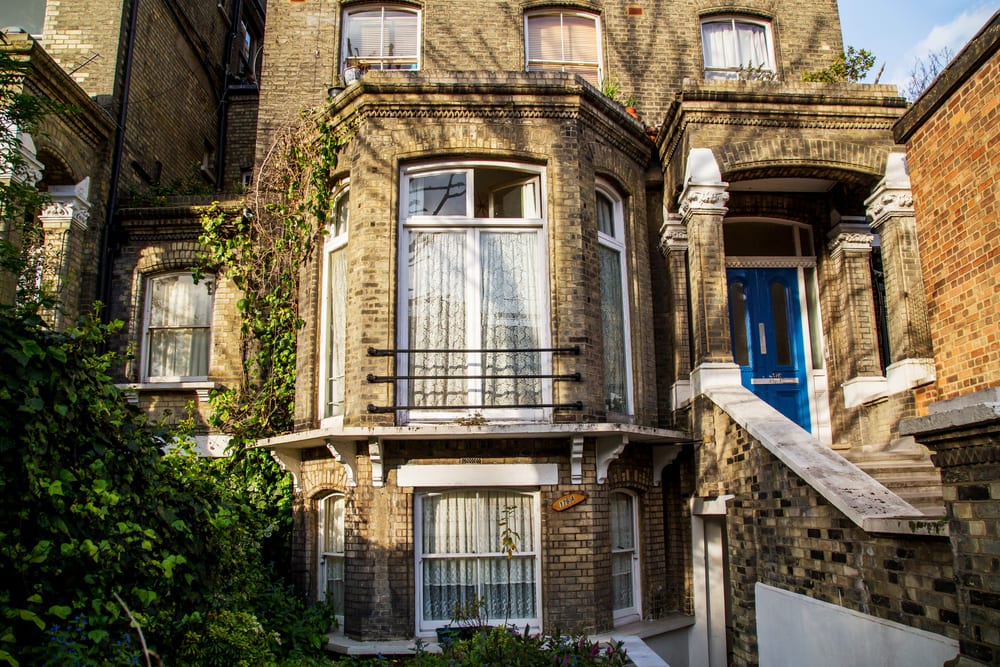
by admin | Dec 6, 2019 | Insurance News
We live and learn and as we learn we grow and change. Some aspects of our life will remain the same all through the passing years, others will change completely and still more will need to be adapted to suit our current circumstances. With this in mind, here are some pointers to look at, when considering what sort of protection you need for your current situation.
What would happen if I lost my job?
If you are currently without debts (including a mortgage) and children, then your first answer might well be savings and/or benefits, but while having emergency savings is always good, by definition, once savings are used they are gone and you may well find you’d prefer to avoid having to deal with the benefits system. Having the right insurance can help to protect and prolong your savings. Some income-protection policies will pay out upon unemployment and hence could be well worth a look. Once debts and/or children come along, then this situation needs to be looked at very seriously.
What would happen if I became unable to work through illness or accident?
Again, if you’re without debts or children, your immediate thought might be to move back with your parents and this can be a feasible solution in some cases. What, however, would happen if your parents’ home needed adjustments made to it to accommodate you until you recovered, for example being made more wheelchair accessible? What if you actually needed care at home? How would your parents and family cope with that? Once debts and children arrive, you really need to have a plan in place for dealing with this situation. You may wish to add critical illness cover for really serious illnesses. Even if you are in employment, it can be worthwhile to arrange your own cover, since you may discover that your benefits are insufficient for your particular situation. The self-employed should make it a priority to check that their insurance cover is sufficient for their needs.
What would happen if I were to die?
If you are without dependents such as children, then life insurance may be irrelevant to you, however if you think that your parents might be in a position when they need help from you in later life, then you may still wish to look at life insurance so as to mitigate the financial impact of your death. As soon as you do have dependents, particularly children, appropriate life insurance becomes of the highest importance, even if you are the home-maker. In the event of your death, someone else will have to undertake all the practical tasks which are currently your responsibility. Life insurance comes in two forms, term insurance (which is for a specific period of time) and whole-life insurance (which stays in place for as long as you pay the premiums). Term insurance is often the best option when people want insurance for a specific purpose, such as to pay off a mortgage and/or to see children into adulthood, but there may be situations when whole-life insurance is a better choice.
Having the right level of cover is as important as having the right sort of cover
If you have too much insurance, your premiums will be higher than necessary, but if you have too little, you will have insufficient protection. Striking the right balance can be tricky, which is why it can be very helpful to get professional financial advice.
For Accident, Sickness and Unemployment insurance we act as introducers only.

by admin | Nov 30, 2019 | Mortgage News
Interest-only mortgages are exactly what they sound like. During the lifetime of the mortgage, you only repay the interest on the mortgage. The principal only becomes repayable at the end of the term. On the one hand, this keeps your monthly payments low. On the other hand, it means you pay the maximum amount of interest because the amount owed does not go down over the term of the mortgage as it does with repayment mortgages. It also means that there is a huge bill waiting for you at the end of the term.
Interest-only mortgages are still very much alive and kicking
These days, interest-only mortgages have just about disappeared from the residential-mortgage market. They are still very much in use in the buy-to-let market but that is another situation. There are, however, still a number of “legacy” interest-only mortgages at various stages of maturity and if you hold one of them, then you need to start thinking seriously about your options.
Option 1 – convert to a repayment mortgage
This may not be as easy as it sounds given that interest-only mortgages are more affordable month-to-month than repayment ones, so, you may find that the higher payments required for a repayment mortgage are out of your reach, especially if you are due to retire over the course of the term. On the other hand, it might not be out of the question either, especially if you are going to be working for most of the term. Although you will not have any equity in your home, if it’s value has gone up, then that will effectively act as a deposit for you and reduce the amount you need to borrow.
Option 2 – sell your home
You don’t have any equity in your home, so equity release isn’t an option. In practical terms, you’re just renting it from the bank, while you work on getting the money together to buy it outright. In principle, you have an advantage over renters in that you can do what you like with and in your own home. The flip side of this, however, is that you also have the responsibility of maintaining the property.
If you can’t convert to a repayment mortgage and don’t yet have a feasible plan in place for paying off the principal at the end of the term, then it might be best to consider whether or not you really stand a decent chance of being able to do so and, even if you do, whether you’re really willing to do whatever it is you’re going to need to do to make that happen. In other words, how much of a sacrifice are you willing to make?
Unless you are 100% sure that you can get the necessary funds together and that you’re willing to do whatever is necessary to achieve your goal, then it might be best just to grit your teeth and sell your home, even if you are in negative equity, because there’s no guarantee that the situation will get better if you wait. In fact it might get worse.
Option 3 – increase your income so as to be able to make the repayment
There are lots of potential ways to increase your income from monetizing your home in some way (e.g. renting out a room), to starting a side-hustle, to looking at savings and investments. Each has different advantages and disadvantages and chances of success. If you’re going to go down this route, then it may make sense to talk with a financial adviser so that you can get an unbiased second opinion on how practical your plan is likely to be and whether there are any adjustments you could make which might improve its chances of success.
Your property may be repossessed if you do not keep up repayments on your mortgage.
Equity Release refers to home reversion plans and lifetime mortgages. To understand the features and risks, ask for a personalised illustration.
For equity release, savings and investments we act as introducers only.

by admin | Nov 23, 2019 | Mortgage News
If you’re a satirist, Brexit is the gift which keeps on giving. If you’re anybody else, Brexit is probably something you’d really like to see resolved one way or another so you can get on with your life with some idea of what the future is likely to bring (even if you don’t necessarily like it). If you’re involved with the property market, Brexit could raise all kinds of interesting questions, the answers to which may depend on your personal situation.
If you’re a renter
Brexit isn’t the only reason why it can be challenging to find good rental properties, although it’s unlikely to be helping. As a renter, the first question to ask is whether or not you actually want to stay where you are. If you do, then the next question is whether or not you can reasonably expect to be able to afford to stay where you are. If the answers to both these questions are yes, your best approach may be to continue “as is” for the time being, but to prepare yourself for a potential move if circumstances change. For example, declutter your belongings as best as you can and try to save some money so you have a deposit handy. If you have pets, then consider the possibility that you may have to start paying “pet rent” due to the limits on deposits.
If you’re a landlord
Property investment is all about the numbers and now is a really good time to review your numbers and think about how you would navigate your way through whatever Brexit might feasibly throw at you. In particular, think about what you might do if interest rates were to go up and/or if income tax was to be increased (or a new tax levied on landlords). If you’re currently living on the investment edge, you may want to think about reducing your portfolio.
If you’re looking to buy
All the standard buying guidelines still apply and need to be taken seriously. For example, you will want as big a deposit as you can possibly put together and you can expect to be grilled thoroughly about your ability to afford a mortgage over the long term. That said, if you’re in a fairly stable, “Brexit-proof” job, you could be in an excellent position to buy now, while other people are sitting on the sidelines to see what Brexit is going to throw their way.
If you’re looking to sell
Buyers are still active, although the degree of buyer activity can vary widely throughout the UK. This means that if you are thinking about selling, it’s probably a good idea to try to take a firm decision sooner rather than later so that you give yourself the maximum, possible time to sell your home. It’s also strongly recommended to pay close attention to presentation and to be realistic about pricing. You will also want to choose your estate agent with care, specifically, make sure you can have confidence in their ability and willingness to deal with any complications which arise after an offer has been accepted.
If you’re a homeowner looking to stay put
If you are a homeowner looking to stay put, then the key question is whether or not you can afford your mortgage over the long term, regardless of what happens as a result of Brexit. If you are at all unsure about this, then you need to look seriously at what action you can take to address the situation. For example, you might want to think about moving two children into one room so you can take advantage of the Rent a Room scheme. You might also want to look at your mortgage deal and see if there is any way you can improve it. For example, you might want to take out a fixed-rate mortgage so that you know that you will have the same payments each month regardless of what interest rates are doing.
If you’d like more information please speak to one of our mortgage advisors
Your property may be repossessed if you do not keep up repayments on your mortgage.
The FCA does not regulate estate agents and some forms of buy to let mortgage
For estate agents we act as introducers only.

by admin | Nov 1, 2019 | Mortgage News
The arrival of the 2020 financial year will spell the end of what remains of mortgage interest tax relief. Although this won’t be exactly news to buy-to-let landlords, it has been in the process of disappearing since April 2017, it may be a useful prompt to buy-to-let landlords to review their finances and make sure they have the right financial products for their situation.
Mortgages
Traditionally, repayment mortgages have been the more expensive option for landlords, but hey offered the benefit of allowing a landlord to build up real equity in their portfolio and, ultimately, to end up owning the property in its entirety. Interest-only mortgages, by contrast, were more affordable and allowed landlords to maximize yield, thus increasing their income for the duration of the mortgage. The abolition of tax relief on mortgage interest may, however, have changed this subtly. The reason for this is that as a repayment mortgage progresses, the borrower pays less and less in interest and more and more of their repayments go towards the capital. With an interest-only mortgage, however, the capital is never repaid (or at least not until the end of the mortgage), which means that the borrower continues to pay interest at the same rate throughout the course of the mortgage. In the old days, this was largely irrelevant, as mortgage interest could be set against tax, but now that the old system of tax relief has now been replaced by a system of flat-rate tax credit, landlords could find that the difference is meaningful even without the benefit of building up equity. As always, people need to do their own sums, but it is definitely worth checking.
Insurance for your property
In addition to taking out standard insurance on the fabric of the building, landlords may want to consider whether or not they want to cover the contents. Even if the property is let unfurnished, it will presumably have at least a kitchen and a bathroom and these can be expensive to replace if your tenants leave them damaged. They can also cause expensive damage to your tenants’ property if they malfunction, for example, if a washing machine springs a leak, so you might also want to consider protecting yourself against that. Finally, although this is not, technically, protecting your property, you might want to take out insurance against loss of income from it, be it through non-payment or through voids.
Insurance for yourself
Harsh as this may sound, protecting your property starts with good tenant selection. There is simply no two ways about this. There is, however, a potential complication in that landlords need to select tenants in a way which complies with the law, in particular the Equality Act 2010. This may seem self-evident, but it can be surprisingly easy to act in a way which may be considered discriminatory, or at least perceived as discriminatory by a potential tenant, especially if a landlord is nervous about falling foul of the “Right-to-Rent” rules. Lettings agents may be useful here, but if landlords choose not to use them (or even if they do), it may be advisable to take out some form of legal expense insurance for landlords. This may also be useful if landlords have to deal with problem tenants. Last, but by no means least, landlords may wish to think about insuring their own health, especially if they are active in the management of their portfolio (as opposed to leaving it to lettings agents).
A final point
If you are using a financial product for a buy-to-let property, then you must take out products which are intended for that market, not products for the residential market.
Your property may be repossessed if you do not keep up repayments on your mortgage.
The FCA does not regulate some forms of buy to let mortgages.
The FCA does not regulate letting agents and we act as introducers for them.

by admin | Oct 26, 2019 | Insurance News
Now that the colder months are getting ready to roll in, many of us like to decorate our homes to make them warmer, cosier and generally nicer places to snuggle up in the winter months. This can go a long way to making us feel if not more positive about autumn and winter, then at least less miserable about the weather and long, dark nights. There’s plenty of seasonal decor available in the shops and making your own can be fun (and a great way to keep children occupied when they’re stuck indoors), but regardless of whether you buy or DIY, make sure to stay safe and avoid accidents, damage and insurance claims. Here are some tips to help.
Anything sold in a retail outlet should be guaranteed safe – but only for its intended purpose!
This is a hugely important point to remember when making seasonal decor. For example, while it may be perfectly possible to glue together photo frames so they look like a traditional lantern, the keyword here is “look like”. Photo frames are not intended to offer fire protection, so they are not necessarily a safe choice for use with real candles. Keep them for pure decor and use LED candles. Even when you are using an item for its intended purpose, be aware that there may be safety considerations (which will probably be stated on the packaging, so always check it). For example, shiny, metallic-looking decorations such as tinsel can be hugely flammable so be very careful where you put them.
If you make your own candles, make sure you choose appropriate containers
Making homemade candles can be easy and fun, but remember to put them in safe containers. Real candles are essentially miniature fires so they need to be put into properly fire-proof containers. This means containers which will not only resist the heat of the flame but also stay at least reasonably cool to the touch while the candle is burning. They should also be stable enough to stay in one place (and should still never be left unattended). A lot of crafters like to pour candles into old cups and mugs, which can often be perfectly fine, but be careful if they’re cracked or chipped as they may not have the strength you need. Basically, remember that there’s a difference between something looking cute on social media and something being safe in real life.
Any decorations young children and pets can reach will be treated as food
Young children and pets put everything in their mouths and it can kill them. Even if it doesn’t it can mean traumatic visits to the hospital or vet’s surgery and in the case of the latter nasty bills, unless, of course, you have pet insurance in which case you’ll just have to find the excess. On a similar note, make sure you are very careful about tidying up after your crafting, especially if you are using small pieces such as beads, which are easy to overlook and equally easy for a young child or pet to swallow.
Only craft on furniture intended for that kind of activity
Even if a craft doesn’t require a great number of tools or physical strength, there is a good chance that you will find yourself leaning in onto the surface and putting it under physical pressure. Craft tables are designed to be strong enough to handle this, other types of furniture may not be, even if they look like they should. In particular, be very careful about using folding tables for anything but drawing or painting. They can literally fold into themselves if put under too much pressure and they’ll take your crafts, equipment and possibly body weight with them!
For pet insurance and building and content insurance, we act as introducers only.






Recent Comments